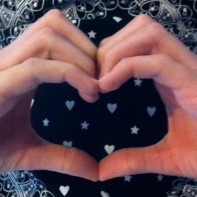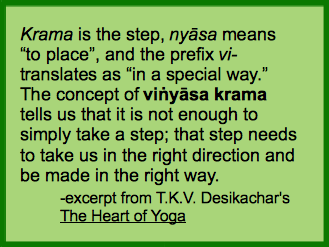 | |
| Moving again! I'm in the front rocking the blue pants. |
When I was little, we moved around a
lot. My dad was a Navy man and bouncing around the globe was part of
the deal. Between the ages of birth and 12 we moved every year or
two, once we lived in the same place for 3 years in a row. Moving
brings about change, whether you want it or not. Each move included
a new house, new school, new friends and new surroundings.
I don't like change, it took me a while
to figure this out. It's partly due to all of those moves as a kid,
but could also be attributed to my kapha tendencies. I like it when
things are humming along, you know what to expect and you are
comfortable in the routine of things. So, when times of change come
about I am resistant, reluctant and sometimes downright unpleasant.
My yoga practice has helped me to
understand my natural inclinations. Through my practice and the
practice of being present I'm more conscious of my knee-jerk reaction
to change. A question I ask myself regularly on and off the mat is,
“do I dislike this because it's new or is my dislike meritted?”
This little question of intention or validity check has helped me to
open up to the possiblity of change.
Now that I'm more aware, I've begun to
appreciate the beauty in the in-between or transitions. There's a
lovely, much needed lull in between sports seasons for the kids,
there's wonderful energy and excitement when they transition from
school to summer break, there's the joy of finding money in the
pocket of your favorite pair of shorts after a long winter and
there's lots of time to connect with the ones you love while
shuttling between activities. Whether you are transitioning from
season to season, age to age, or between roles, there's a lot of
juicy stuff in the middle that I've overlooked in the past.
From the perspective of the physcial
yoga practice, there's plenty of good stuff in between too. Bringing
mindfullness as we transition in and out of poses, through a familiar
connecting vinyasa or a common sequence, we can create a more
challenging practic, both physically and mentally. Here are just a
few areas where I've brought focus recently. You can too, just be
mindful of where you are checking out or blasting through and I'm
sure you'll find some of that juicy stuff in between.
- Sun Salutation: arriving completely into bhujangasana (cobra) or urhdva mukha svanasana (up dog) with shoulders dripping down the back, before lifting through to adho mukha svanasana (down dog).
- Warrior Dance: keeping the deep knee bend while transitioning between virabhadrasana II (warrior II) to parsvokonasana (side angle) and back again.
- Down Dog Step-Through: from adho mukha svanasana (down dog) engage uddiyana bandha as you draw the knee tight to the chest, lifting high enough to set the foot down with control and a heel-toe rolling action. Finish by spreading the toes and gently gripping the mat.
Recently, I asked the question of my
class, “how to you respond to change?” I was pleased to find out
I'm not alone. It was also fun to hear the answers of the more
adventurous yogis who almost always relish in something new. I think
I'm starting to understand their point of view.
Enjoy the Journey!
Suzanne



















